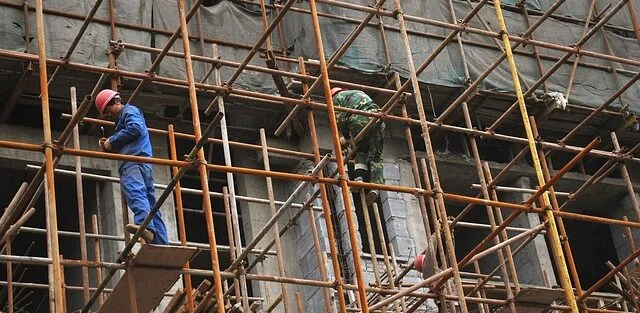OSHA Walking-Working Surface Regulations: A Comprehensive Guide

Walking-working surfaces are a common hazard in many workplaces. Slips, trips, and falls can result in serious injuries or even death. To help prevent these accidents, the Occupational Safety and Health Administration (OSHA) has established a number of regulations governing walking-working surfaces. Unfortunately, employers and jobsite managers don’t always comply with these regulations.
This blog article will provide a comprehensive overview of OSHA’s walking-working surface regulations, including the following topics:
- What are walking-working surfaces?
- What are the OSHA requirements for walking-working surfaces?
- How can employers comply with OSHA’s walking-working surface regulations?
- What are the penalties for violating OSHA’s walking-working surface regulations?
What are walking-working surfaces?
Walking-working surfaces are any horizontal or vertical surface on or through which an employee walks, works, or gains access to a work area or workplace location. This includes floors, roofs, stairs, ladders, catwalks, and platforms.
What are the OSHA requirements for walking-working surfaces?
The OSHA walking-working surfaces regulations are found in 29 CFR 1910.22. These regulations cover a wide range of topics, including:
- The inspection and maintenance of walking-working surfaces
- The provision of guardrails and other fall protection systems
- The use of personal fall protection systems
- The training of employees on walking-working surface safety
- Inspection and Maintenance of Walking-Working Surfaces
These regulations require employers to:
- Keep walking-working surfaces free of hazards such as loose boards, holes, spills, and debris.
- Provide guardrails or other barriers to protect employees from falling from high places.
- Ensure that walking-working surfaces can support the weight of employees and equipment.
- Provide safe means of access and egress to and from walking-working surfaces.
How can employers comply with OSHA’s walking-working surface regulations?
There are a number of steps that employers should take to comply with OSHA’s walking-working surface regulations. These include:
- Conducting regular inspections of walking-working surfaces to identify and correct hazards.
- Providing training to employees on how to identify and avoid walking-working surface hazards.
- Using appropriate guard rails and fall protection systems when employees are working at heights.
- Maintaining walking-working surfaces in good condition.
Regular Inspections
Employers are required to inspect walking-working surfaces regularly to identify and correct hazards. The frequency of inspections will depend on the type of walking-working surface and the level of hazard. For example, elevated surfaces should be inspected at least monthly, while wet or slippery surfaces may need to be inspected more often.
Training
Employers must train their employees on the hazards of walking-working surfaces and the procedures for preventing falls. The training should be in a language that the employees can understand and should be repeated as needed.
Guardrails and Fall Protection Systems
Employers must provide guardrails or other fall protection systems to protect employees from falls from elevated surfaces. Guardrails must be at least 42 inches high and have a mid-rail or toeboard. Other fall protection systems may include personal fall arrest systems, travel restraint systems, and positioning systems.
Personal Fall Protection Systems
Personal fall protection systems can be used to protect employees from falls when other fall protection measures are not feasible. Personal fall arrest systems use a harness and lanyard to secure the employee to an anchor point. Travel restraint systems allow the employee to move freely while still being protected from falls. Positioning systems are used to keep the employee in a specific location while they work.
What Should I do if I’ve had a Fall at Work?
If you’ve been injured in a fall at work, you likely have a claim against your employer’s worker’s compensation insurance to have your medical bills paid and for a portion of your wages if you are unable to work becuase of your injuries. But you might also have claims outside of worker’s compensation for things like pain and suffering, emotional distress, and loss of enjoyment of life. The first thing you should do is seek necessary medical treatment. Even if you don’t think you were hurt that bad, get checked out by a doctor. You should also report the fall to your supervisor and to someone at the jobsite you were working on. Take pictures of the scene. It will be your burden to prove any defects in the premises that caused your fall. Get the names of any witnesses you may need later.
You should also speak with an attorney who is knowledgeable about OSHA regulations and has experience handling workplace injuries. If you would like to schedule a no-cost consultation with a member of our team, give us call at (225) 963-9638 or click here to contact us.




